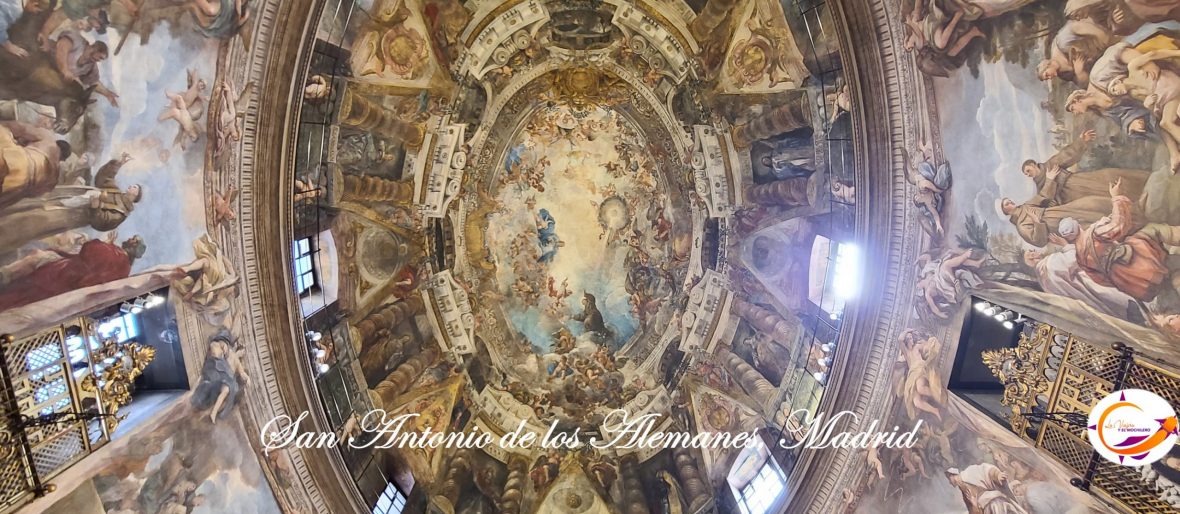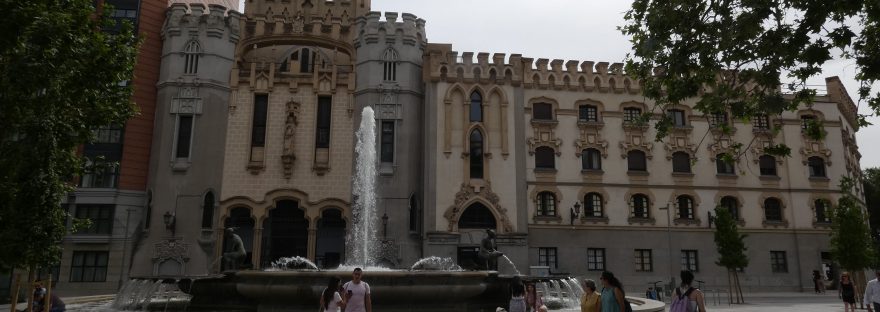Its facade, reminds us of a medieval fortress, creating a very marked and beautiful contrast with the modern buildings that surround it. It is the National Temple of Saint Theresa of Jesus and Convent of the Discalced Carmelite Fathers, also known as the Church of Saint Teresa and Saint Joseph in Madrid, Spain. This church was declared an Asset of Cultural Interest on December 20, 1995.
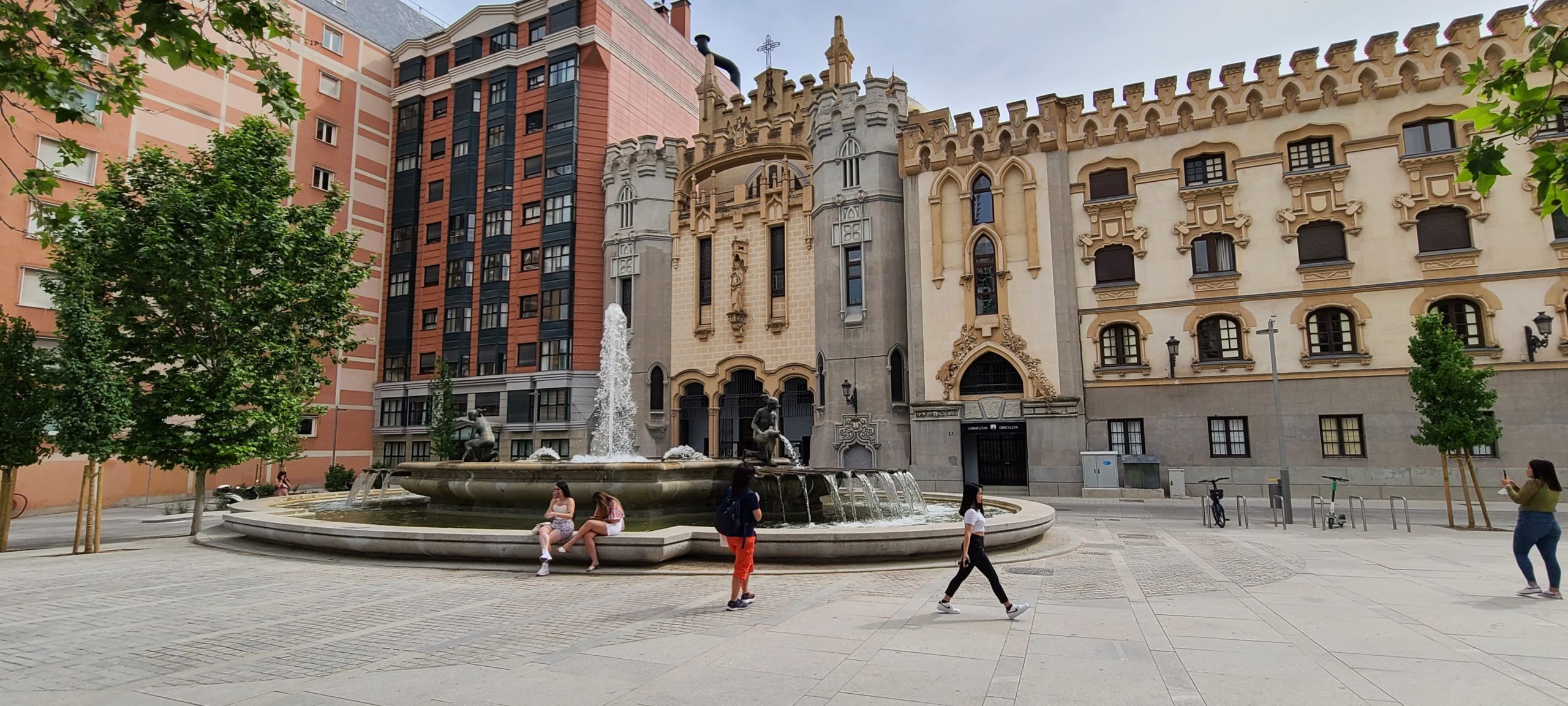
The Church of Saint Theresa and Saint Joseph is located on the “Plaza de España”, in what was formerly the “Casa de Vacas” on the Prince Pius Mount. The history of this temple intertwines with the history of the Carmelite Order that occupies it. The Discalced Carmelites settled for the first time in Madrid in 1605, in the then convent of Saint Hermengild, nowadays the Church of Saint Joseph. Later, in 1836, they were displaced due to the disentailment of Mendizábal, returning to Madrid in 1876. Finally they were moved to the “Plaza de España”, to its current site.
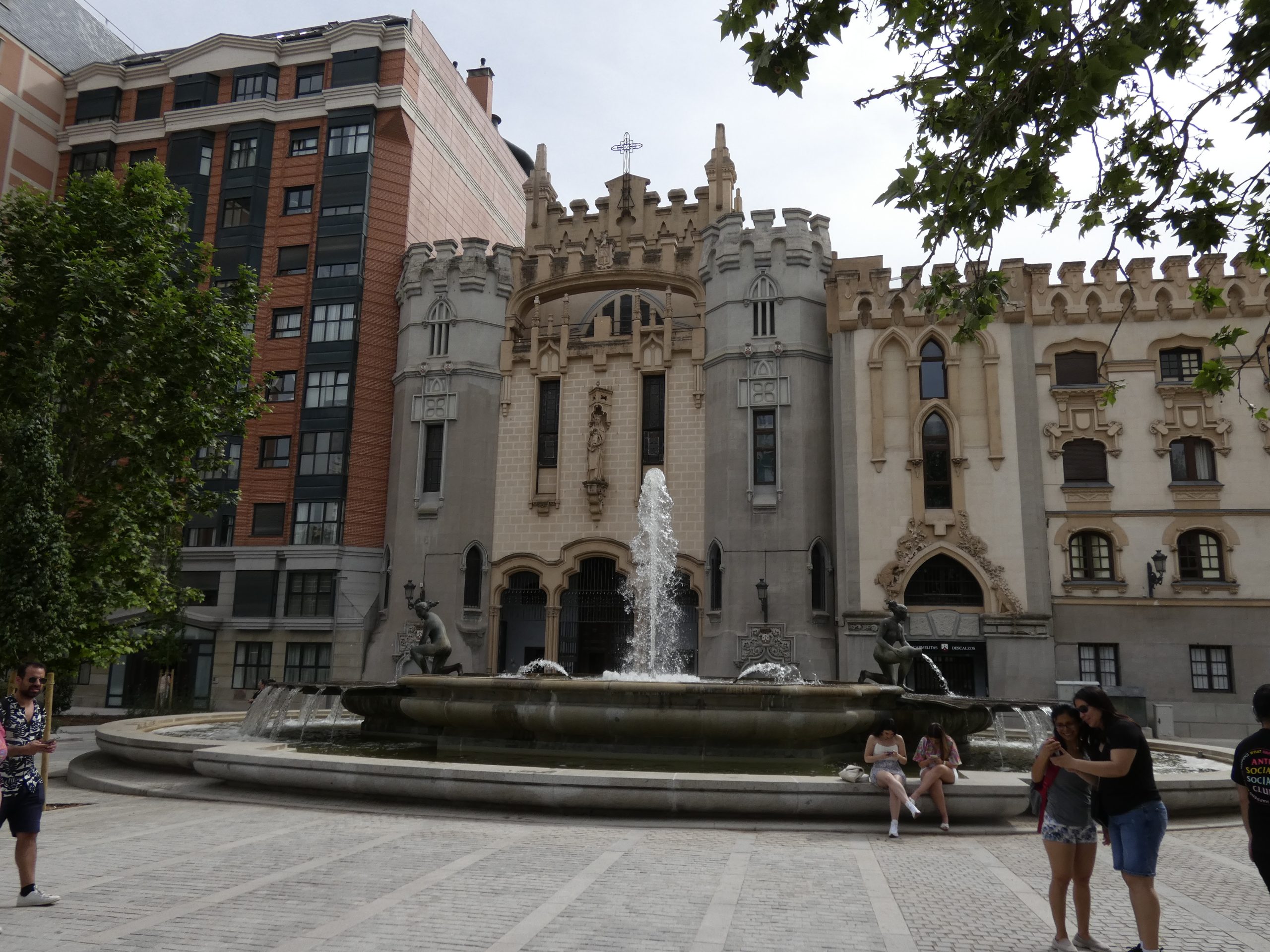
The first stone of the temple was laid on March 28, 1916, date which commemorated the 100 years of the death of Saint Theresa. However, it was not until 1923 that construction began, eventually being inaugurated on May 26, 1928. During the burning of convents in 1931 it suffered serious damage. After the end of the Civil War, the building was completely restored given that the fire had destroyed a large portion of the church during the conflict.
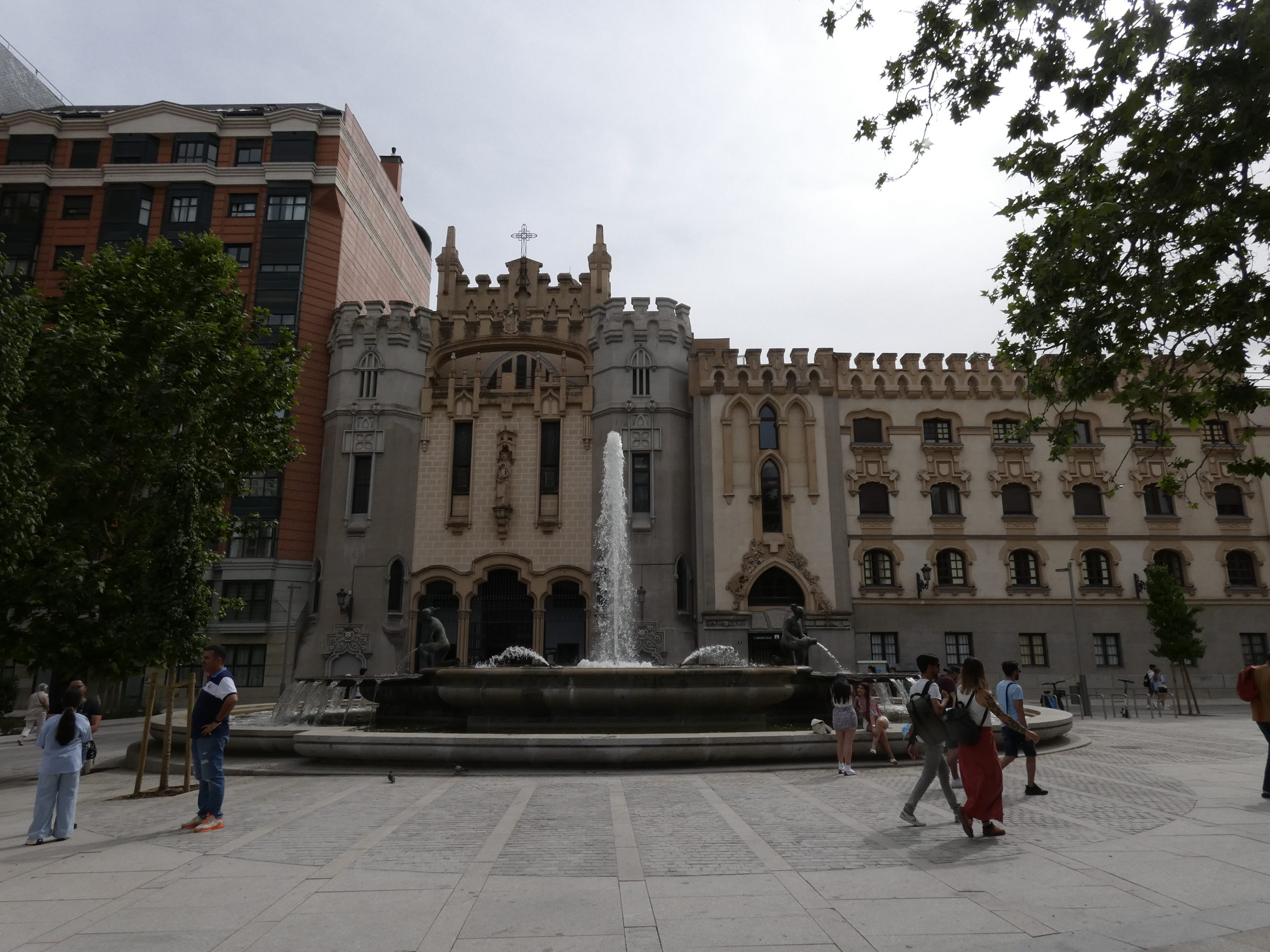
The building is the work of Spanish architect Jesús Carrasco-Muñoz (Madrid, 1869-1957); his design was inspired by a book written by Saint Theresa of Jesus, “El Castillo Interior” (The Castle Within) or “Las Moradas,” which explains a bit of the medieval fortress-like appearance of the structure. Carrasco-Muñoz conceived the building as an eclectic one, in which medieval currents are mixed to transform it to a style closer to modernism. In addition, he had to solve the difficulty posed by the topography of the site. He used reinforced concrete for the construction, being the Church of Saint Teresa of Jesus, the first temple in Madrid to use this type of material.
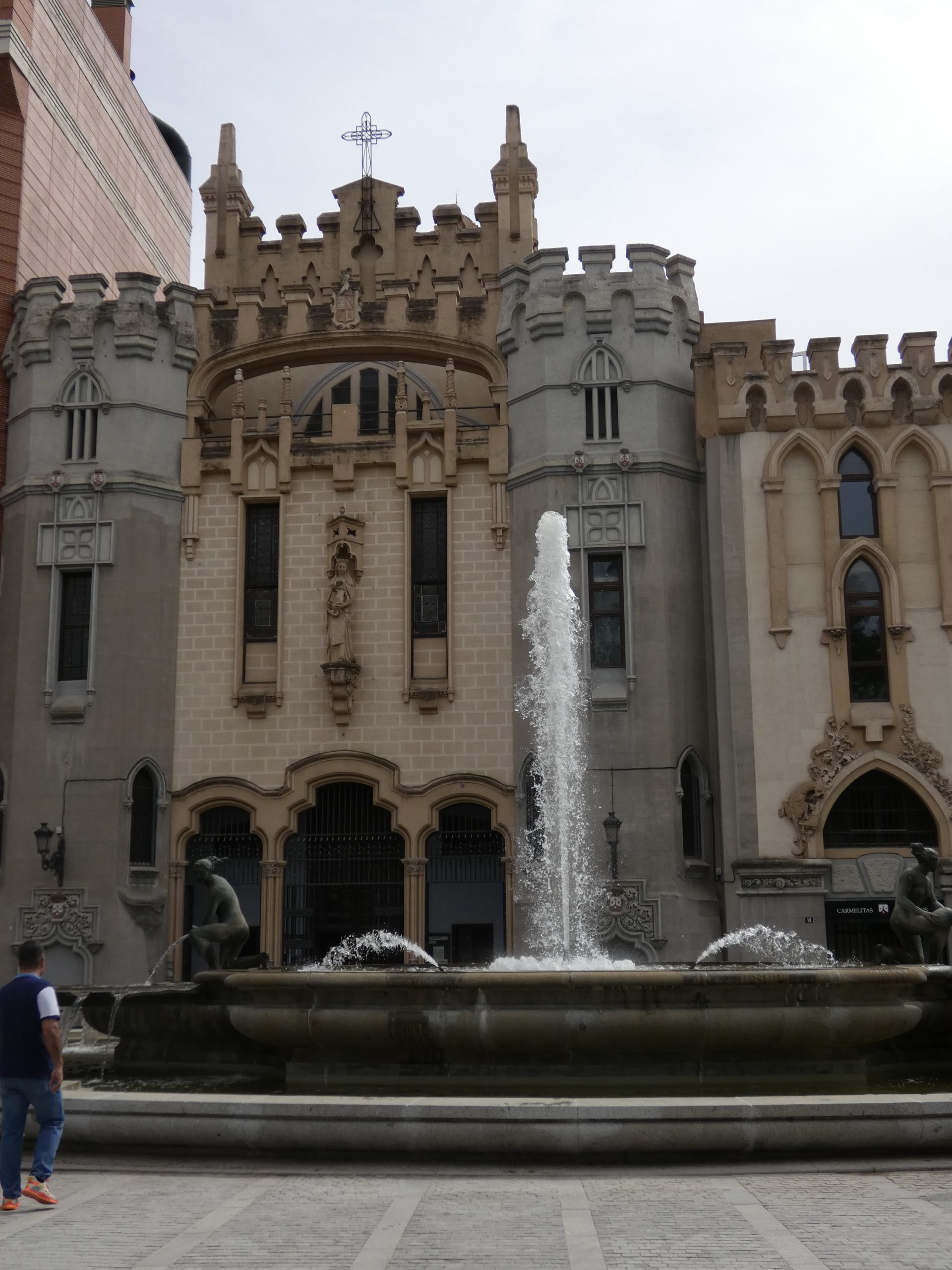
The facade is composed of battlements, with a large central body and two polygonal towers on each side. In the central body there are three doors to the temple, with three large arches and above the portico there is a sculpture of Saint Theresa.
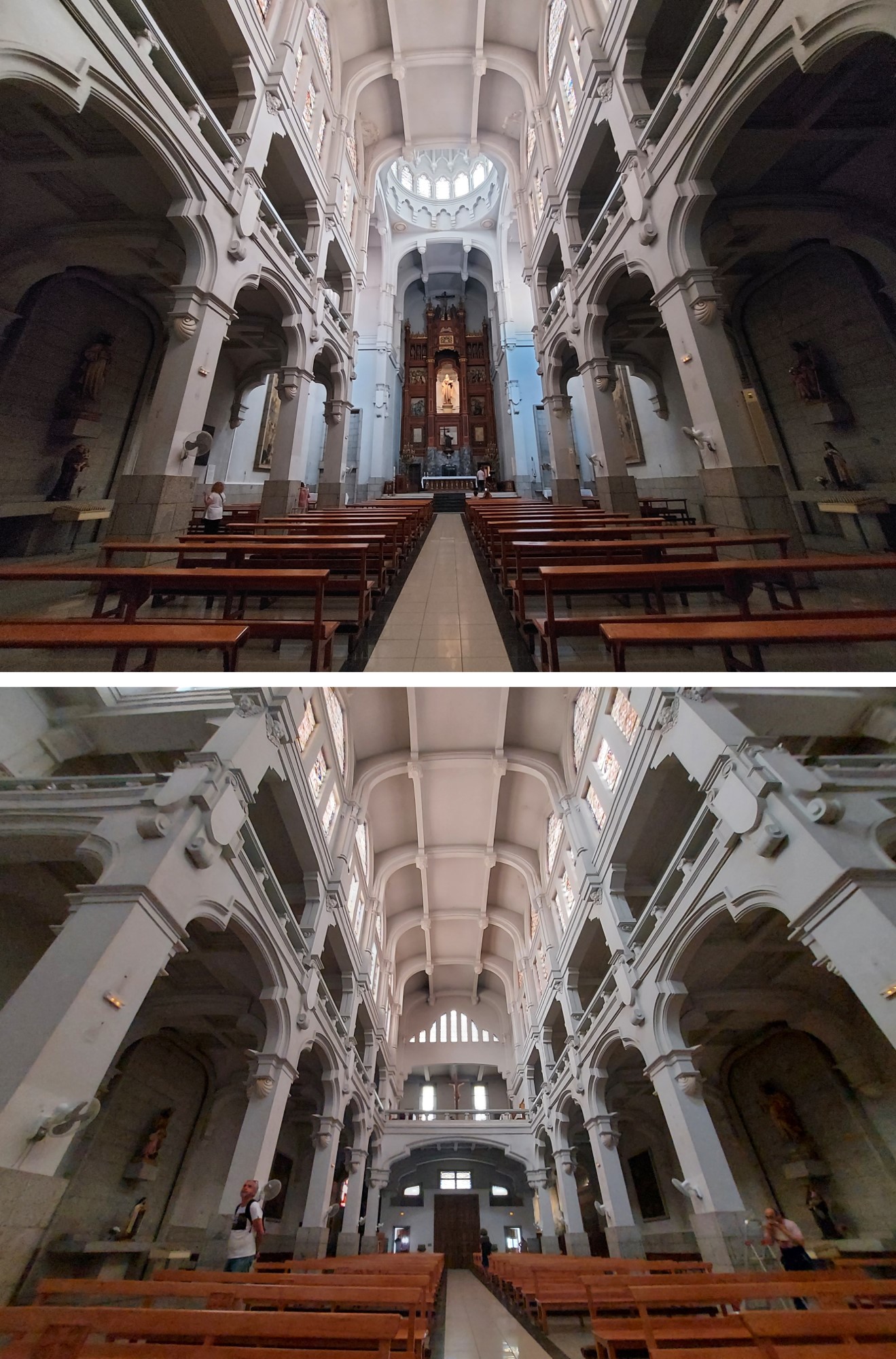
The Church is a temple of great dimensions. It has a Latin cross plan with three naves: the central one is covered with a half-barrel vault and two lateral linteled naves with tribunes. It is covered with a flat roof supported by lowered semicircular arches. The transept is of great height crowned with a dome with lantern.
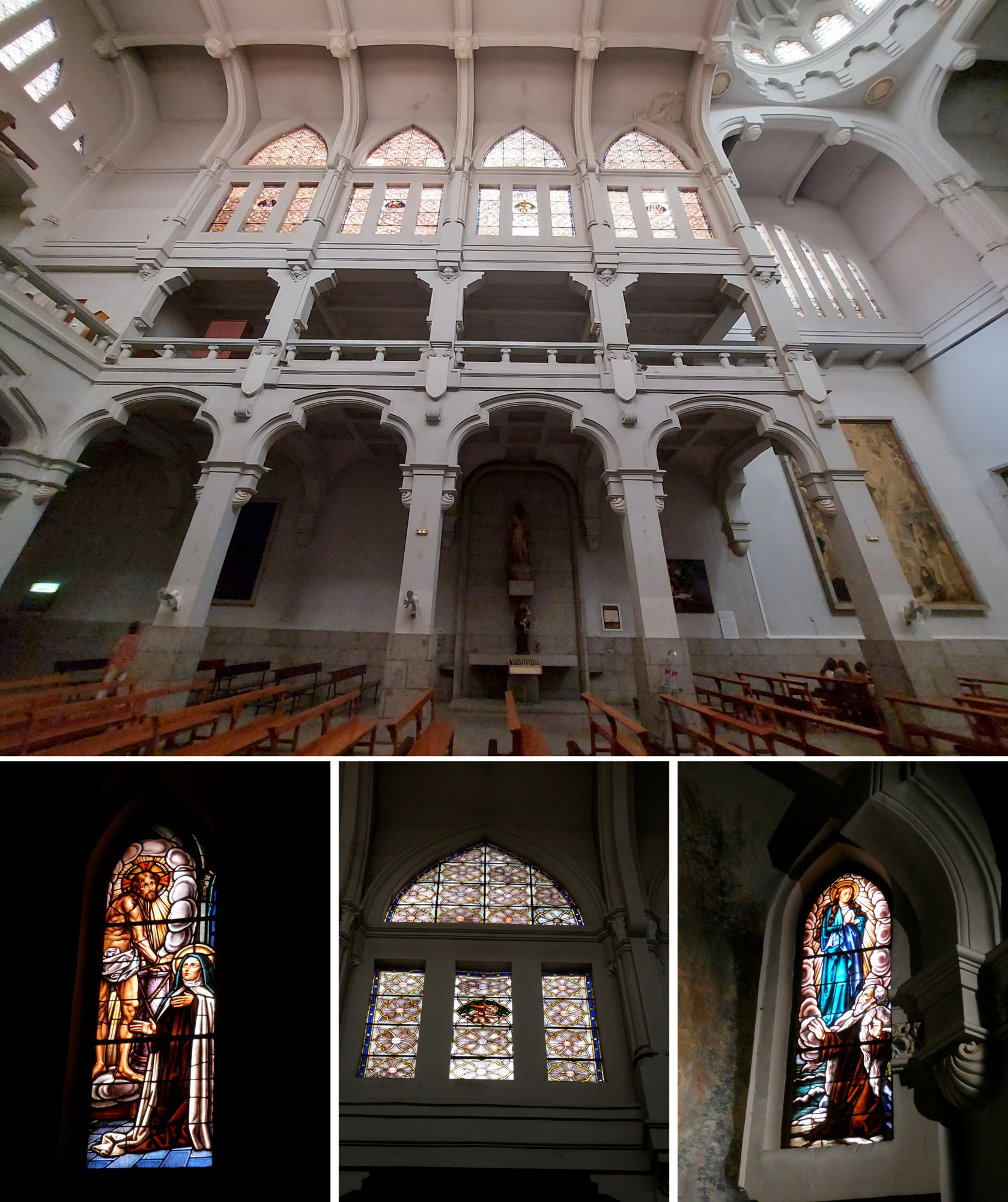
One of the most outstanding characteristics of the Church is its great luminosity, achieved through its stained glass windows made by the “House of Maumejean” in the 20th century.
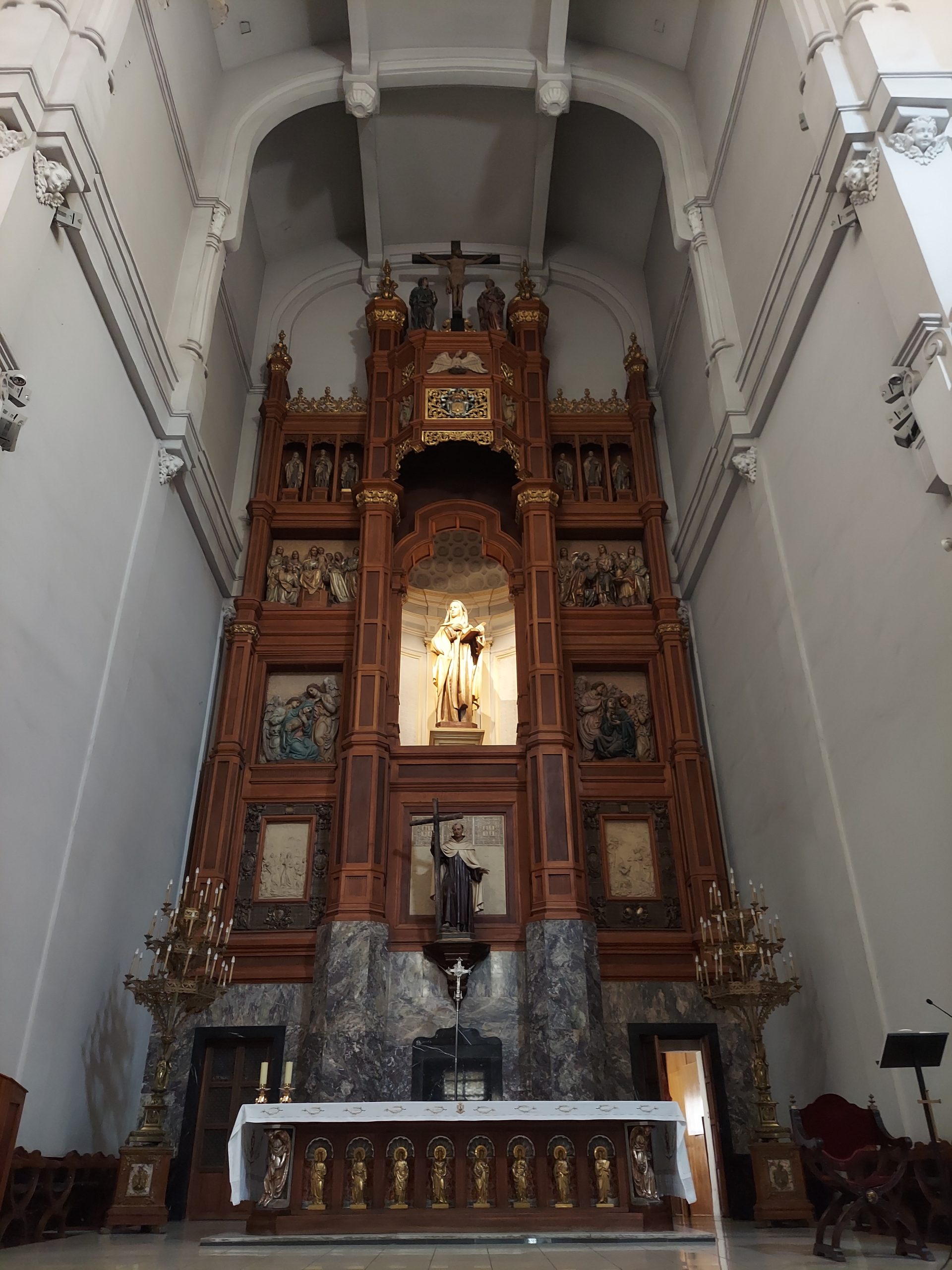
The main altarpiece, the work of Félix Granda Buila, is 19 meters high and rests on a marble cladding. In the center, in the lower part, there is a sculpture of Saint John of the Cross, and in the center a large sculpture of Saint Theresa. The sides of the polychrome wood altarpiece is a relief with sculptures of saints. On the altar there is a table over a bronze frontal with the Twelve Apostles.
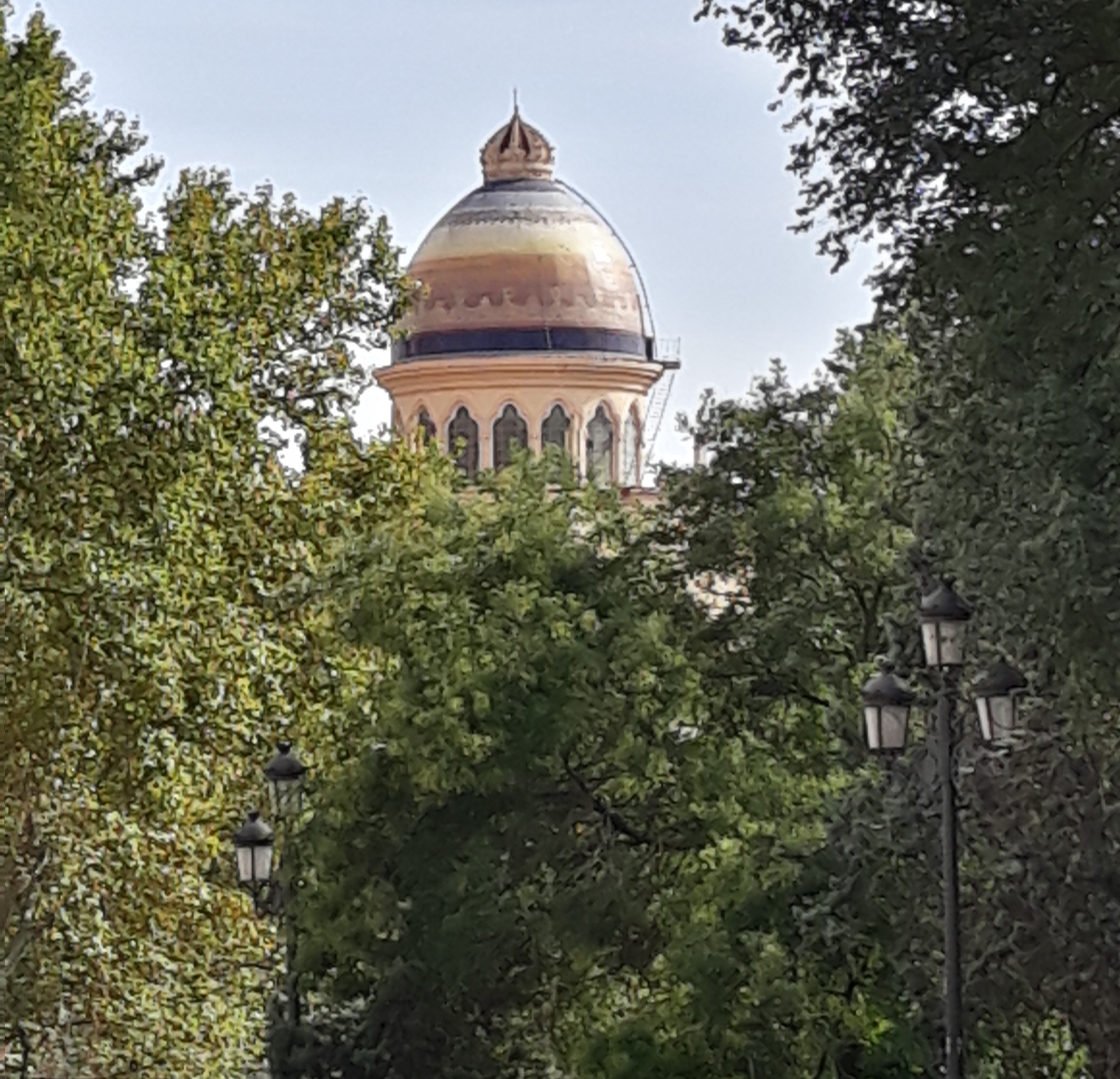
The dome, located 35 meters high, is of Byzantine style and is decorated on the outside with polychrome tiles in yellow, orange, red and blue, topped by a royal crown. The work was done by the ceramist Daniel Zuloaga, commissioned by the “Marquise of La Floresta”. The drum is composed of sixteen pointed windows that once had motifs of the “The Castle Within” of Saint Theresa and the “Ascent to Mount Carmel” of Saint John of the Cross, destroyed during the fire of 1931.
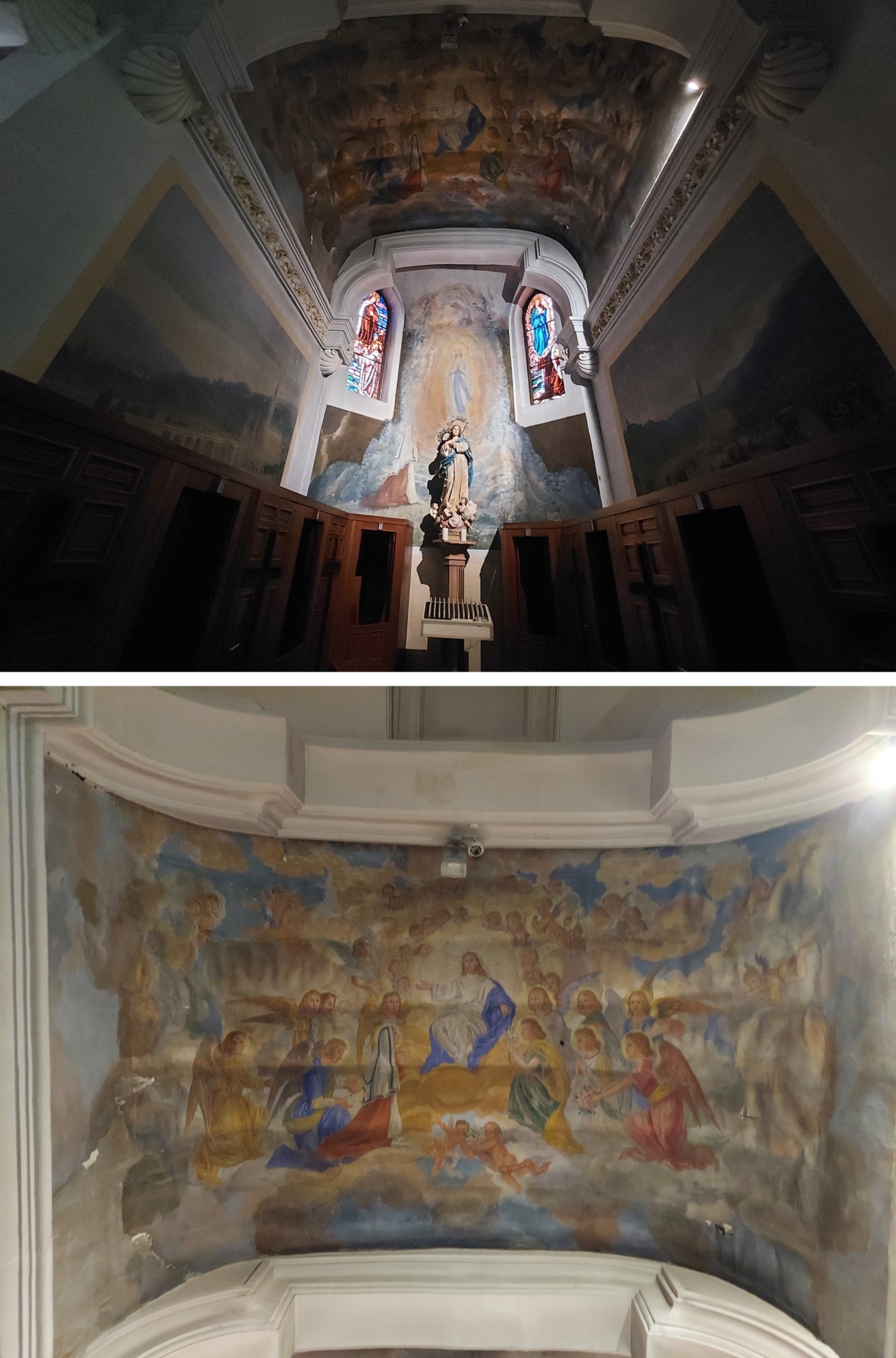
At present, the convent and the church belong to the Order of Discalced Carmelites, where separate residences for the clergy as well as the elderly were established. It served as a parish church from 1965 until January 1, 2016. It continues to function as a church with the celebration of mass, confession, prayer and formation activities, but now as part of the Saint Mark Parish.
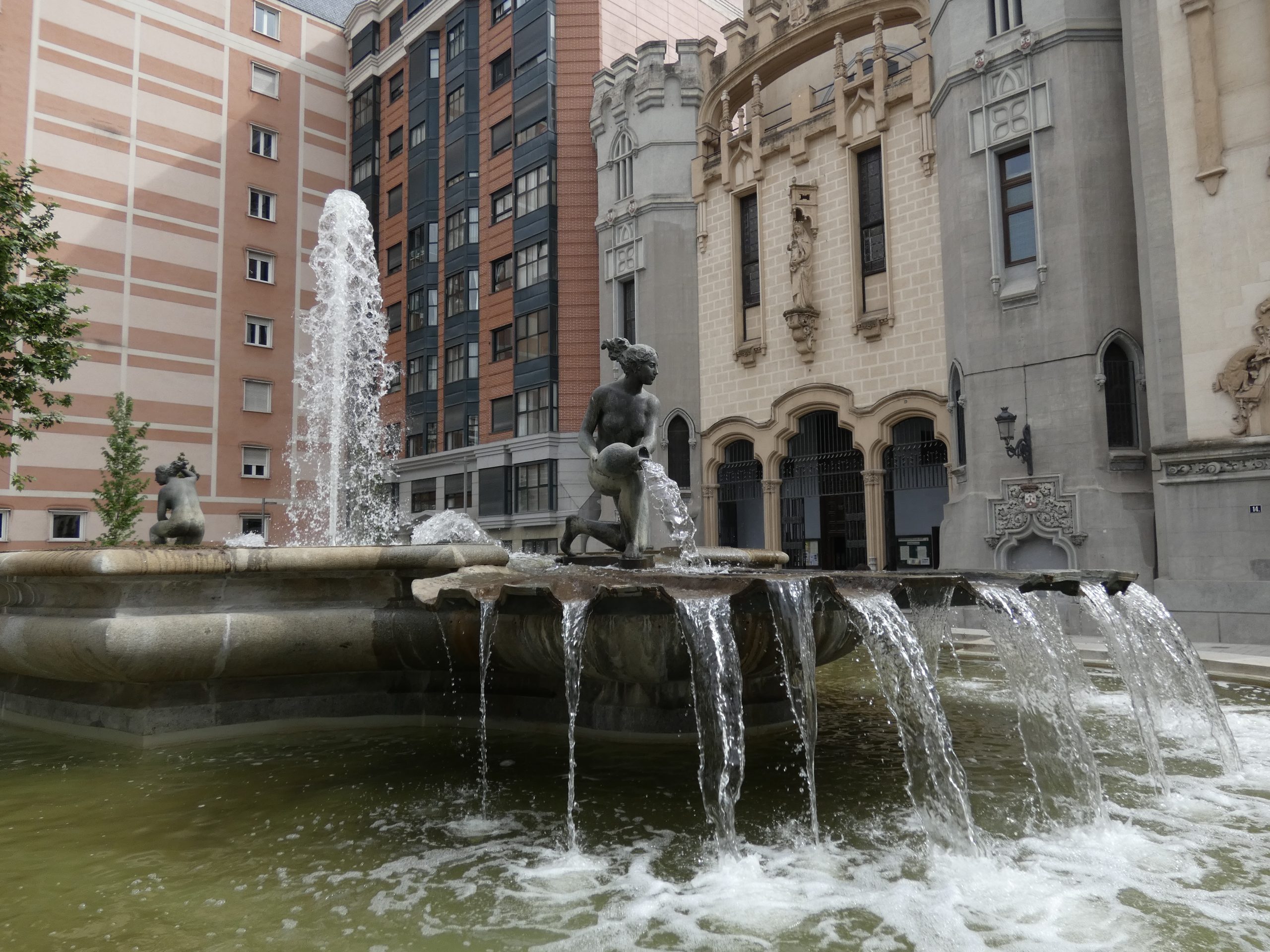
Today one can enjoy the fountain that was relocated from the “Plaza de España”, to the entrance to the Church, adding beauty to this space.
Resources:
https://es.wikipedia.org/wiki/Templo_Nacional_de_Santa_Teresa_de_Jes%C3%BAs_y_Convento_de_los_Padres_Carmelitas_Descalzos
https://www.rutasconhistoria.es/loc/iglesia-de-santa-teresa-y-san-jose-madrid
https://www.esmadrid.com/informacion-turistica/iglesia-santa-teresa-jesus-san-jose
